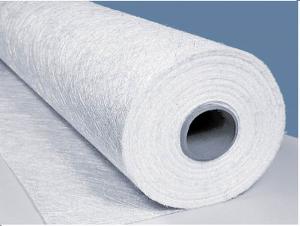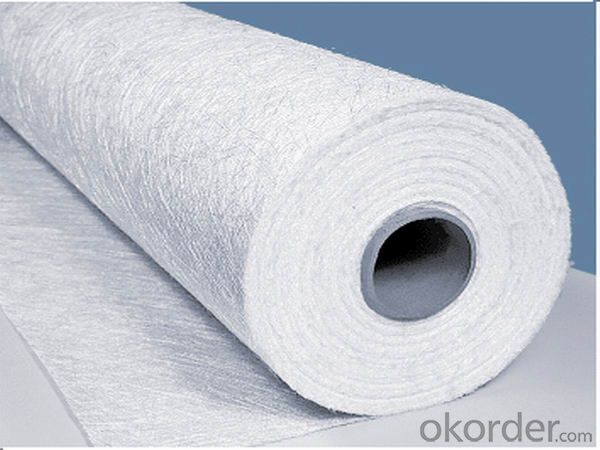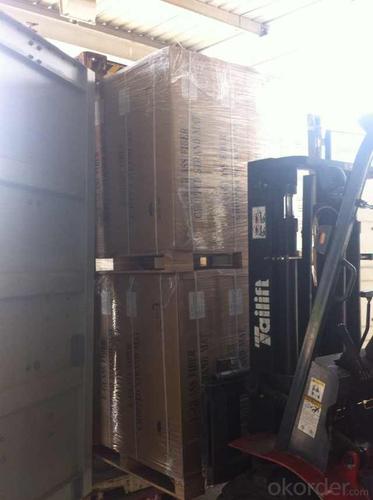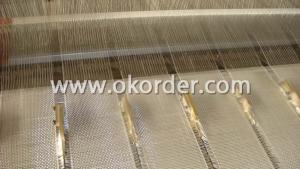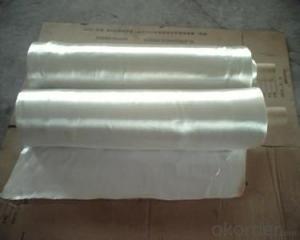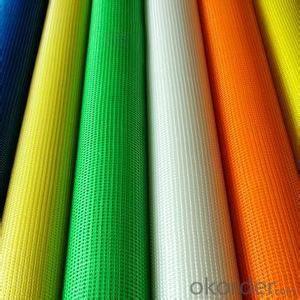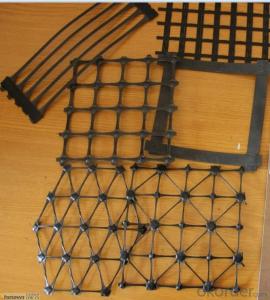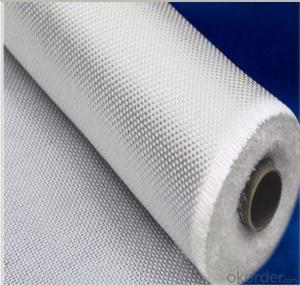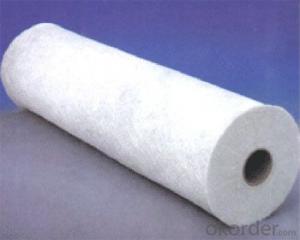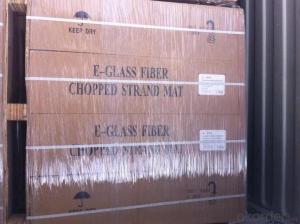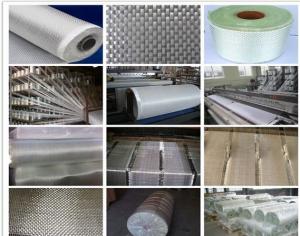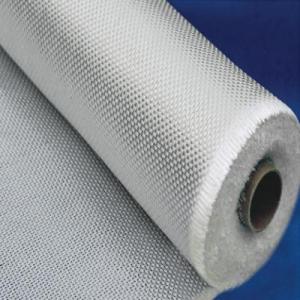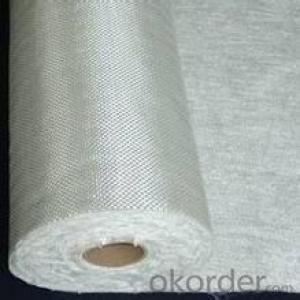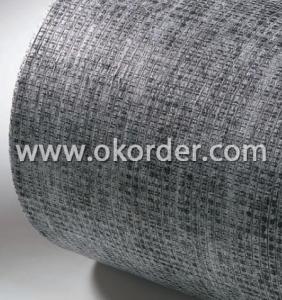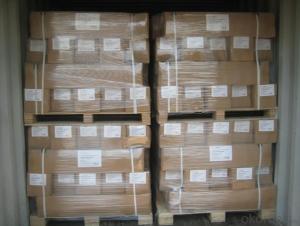E Glass Fiber CSM (Powder) Fiberglass Fabrics
- Loading Port:
- China Main Port
- Payment Terms:
- TT or LC
- Min Order Qty:
- 22160 kg
- Supply Capability:
- 200000Kg Per Month kg/month
OKorder Service Pledge
OKorder Financial Service
You Might Also Like
1.Brief Introduction
E-Glass Powder Chopped Strand Mat is made of randomly distributed chopped strands held together by a powder binder.
It is compatible with UP, VE, EP, PF resins.
The roll width ranges from 50mm to 3300mm.
It is designed for use in hand lay-up, filament winding, compression molding and continuous laminating processes. Its end-use applications include boats, bath equipment, automotive parts, chemical corrosion resistant pipes, tanks, cooling towers and building components
2.Product Features
Fast breakdown in styrene
High tensile strength, allowing for use in hand lay-up process to produce large-area parts
Good wet-through and fast wet-out in resins, rapid air lease
Superior acid corrosion resistance
3.Product Specifications
Property | Area Weight | Moisture Content | Size Content | Breakage Strength | Width |
| (%) | (%) | (%) | (N) | (mm) |
Property | IS03374 | ISO3344 | ISO1887 | ISO3342 |
|
EMC80P | ±7.5 | ≤0.20 | 8-12 | ≥40 | 50-3300 |
EMC100P | ≥40 | ||||
EMC120P | ≥50 | ||||
EMC150P | 4-8 | ≥50 | |||
EMC180P | ≥60 | ||||
EMC200P | ≥60 | ||||
EMC225P | ≥60 | ||||
EMC300P | 3-4 | ≥90 | |||
EMC450P | ≥120 | ||||
EMC600P | ≥150 | ||||
EMC900P | ≥200 |
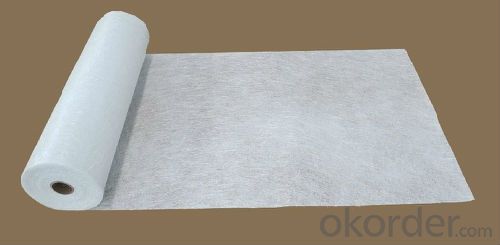
4.FAQ
Packaging:
Each Chopped Strand Mat is wound onto a paper tube which has an inside diameter of 76mm and the mat roll has a diameter of 275mm. The mat roll is wrapped up with plastic film,and then packed in a cardboard box or wrapped up with kraft paper. The rolls can be vertically or horizontally placed. For transportation, the rolls can be loaded into a cantainer directly or on pallets.
Storage:
Unless otherwise specified, Chopped Strand Mat should be stored in a dry, cool and rain-proof area. It is recommended that the room temperature and humidity should be always maintained at 15℃~35℃ and 35%~65% respectively.
- Q: Is fiberglass fabric suitable for use in medical dressings?
- Fiberglass fabric is indeed appropriate for use in medical dressings. It possesses numerous characteristics that render it perfect for this purpose. Firstly, its high durability and strength offer exceptional support and protection to wounds or injuries. Additionally, it resists tears and punctures, ensuring the dressing remains intact even when in motion. Furthermore, fiberglass fabric is lightweight and breathable, allowing the passage of air and moisture, which aids in healing and prevents infections. Moreover, it is non-absorbent, meaning it does not retain moisture, thereby preventing the dressing from becoming damp or uncomfortable. Furthermore, fiberglass fabric is hypoallergenic, reducing the likelihood of allergic reactions in patients with sensitive skin. Overall, these qualities make fiberglass fabric an appropriate option for medical dressings as it provides the necessary protection and support while ensuring comfort and promoting healing.
- Q: Can fiberglass fabric be used for making safety nets or barriers?
- Yes, fiberglass fabric can be used for making safety nets or barriers. Its high tensile strength, durability, and resistance to heat, chemicals, and weather make it a suitable material for creating reliable safety nets and barriers in various industries, including construction, sports, and transportation.
- Q: Can fiberglass fabric be used for reinforcement in plastic parts?
- Yes, fiberglass fabric can be used for reinforcement in plastic parts. Fiberglass fabric is known for its high strength and durability, making it an ideal choice for reinforcing plastic components. When the fabric is embedded in plastic material, it adds strength, rigidity, and resistance to deformation. This reinforcement is particularly useful in applications where the plastic part needs to withstand heavy loads, impacts, or extreme temperatures. Additionally, fiberglass fabric can also improve the dimensional stability of plastic parts, reducing the risk of warping or distortion. Overall, fiberglass fabric is widely used in various industries to enhance the mechanical properties and performance of plastic parts.
- Q: Can fiberglass fabric be used for making curtains and drapes?
- Yes, fiberglass fabric can be used for making curtains and drapes. It is a durable and versatile material that offers several benefits such as being fire-resistant, lightweight, and easy to maintain. Additionally, fiberglass fabric can provide insulation and light control, making it a suitable choice for curtains and drapes in various settings.
- Q: What are the different fiberglass fabric weights for lightweight applications?
- There are several different fiberglass fabric weights available for lightweight applications. These weights are typically measured in ounces per square yard (oz/yd²) and range from very lightweight options to slightly heavier ones. One of the lightest options is a 3 oz/yd² fiberglass fabric, which is often used in applications where weight is a critical factor. This weight is suitable for applications such as aerospace components, lightweight structures, and automotive parts. Another commonly used weight for lightweight applications is the 4 oz/yd² fiberglass fabric. This weight provides a slightly higher level of strength and durability compared to the 3 oz/yd² fabric, while still remaining lightweight. It is often used in applications such as boat construction, sporting goods, and automotive body panels. For applications that require a bit more strength and rigidity, a 6 oz/yd² fiberglass fabric may be used. This weight is still relatively lightweight, but offers a higher level of reinforcement. It is commonly used in applications such as wind turbine blades, construction, and marine applications. Lastly, a 9 oz/yd² fiberglass fabric is considered to be on the heavier side for lightweight applications, but still falls within the lightweight category. This weight provides a greater level of strength and durability, making it suitable for applications such as industrial equipment, tanks, and heavy-duty structures. It is important to note that these weight categories are just general guidelines, and the specific requirements of each application may vary. Consulting with a fiberglass fabric supplier or manufacturer can provide more specific recommendations based on the intended use and desired performance of the lightweight application.
- Q: Is fiberglass fabric resistant to chemicals used in wastewater treatment?
- Fiberglass fabric exhibits remarkable resistance to the chemicals employed in wastewater treatment. Its outstanding chemical resistance has earned fiberglass a reputation as an optimal material for scenarios where exposure to diverse chemicals is probable. It has the capacity to endure a broad spectrum of corrosive substances, such as acids, alkalis, and solvents, commonly encountered in wastewater treatment processes. Due to the non-reactive quality of fiberglass fabric, it remains unaffected and undamaged when exposed to these chemicals, making it a dependable choice for implementation in wastewater treatment facilities. Additionally, fiberglass fabric also offers resistance to UV radiation, moisture, and fluctuations in temperature, which further bolsters its durability and suitability for such environments.
- Q: Can fiberglass fabric be used in low-temperature applications?
- Yes, fiberglass fabric can be used in low-temperature applications. It is known for its excellent thermal insulation properties, making it suitable for use in environments with low temperatures. Additionally, fiberglass fabric retains its strength and flexibility even in extreme cold, making it a reliable choice for various low-temperature applications such as insulation, cryogenic storage, and cold weather clothing.
- Q: Is fiberglass fabric suitable for making protective covers for machinery?
- Fiberglass fabric is indeed an appropriate material for crafting protective covers for machinery. This resilient and sturdy material exhibits exceptional resistance against heat, chemicals, and abrasion. Moreover, its lightweight and pliable nature make it effortless to manipulate and mold into personalized covers for various machinery types. In addition, fiberglass fabric possesses commendable insulation properties, shielding the machinery from temperature fluctuations and potential harm. Furthermore, this material is non-flammable, further fortifying the safety of the machinery it envelops. All in all, fiberglass fabric emerges as a dependable and efficacious option for the production of machinery protective covers.
- Q: Home improvement how to do waterproof acceptance?
- General engineering only sampling experiments on the watering pipe root, root protruding part of the chimney roof flashing, the number of extraction is a projecting roof flashing 1/3, watering not less than one hour, no leakage. If it is found that seepage and leakage, double the number of tests to be carried out, and then leakage parts, should be carried out all watering test
- Q: Can fiberglass fabric be used for insulation in underground structures?
- Yes, fiberglass fabric can be used for insulation in underground structures. It is a commonly used material for insulation due to its high thermal resistance and moisture resistance properties. Additionally, fiberglass fabric is lightweight, durable, and easy to install, making it suitable for underground applications where insulation is required to maintain temperature control and prevent condensation.
Send your message to us
E Glass Fiber CSM (Powder) Fiberglass Fabrics
- Loading Port:
- China Main Port
- Payment Terms:
- TT or LC
- Min Order Qty:
- 22160 kg
- Supply Capability:
- 200000Kg Per Month kg/month
OKorder Service Pledge
OKorder Financial Service
Similar products
Hot products
Hot Searches
Related keywords
